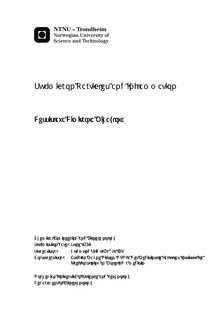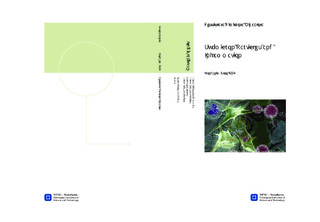| dc.contributor.advisor | Skjåk-Bræk, Gudmund | nb_NO |
| dc.contributor.advisor | Nilsen, Asbjørn Magne | nb_NO |
| dc.contributor.author | Mihaylova, Dessislava Dimitrova | nb_NO |
| dc.date.accessioned | 2014-12-19T13:15:02Z | |
| dc.date.available | 2014-12-19T13:15:02Z | |
| dc.date.created | 2012-11-08 | nb_NO |
| dc.date.issued | 2012 | nb_NO |
| dc.identifier | 566104 | nb_NO |
| dc.identifier | ntnudaim:8067 | nb_NO |
| dc.identifier.uri | http://hdl.handle.net/11250/245871 | |
| dc.description.abstract | Iron nanoparticles occur naturally in the environment, but their exposure increases dramatically due to the field of nanotechnology and –medicine. It is poorly understood how the intracellular cooperative mechanisms of submicron particles and microorganisms function on mammalian immune system. In this study, superparamagnetic iron oxide (SPIO) submicron particles will be used to benefit the research within environmental diseases, addressing the biocompatibility of these particles. The size-dependent effects in the immune system of two carboxyl coated SPIO particles with stated sizes 100 nm and 1 µm will be studied in vitro. It would be interesting to determine whether these particles were able to activate the inflammasome, but still, the precise molecular mechanisms for the activation remain unknown. In order to reveal the biocompatibility of these particles, tests were performed as a function of particle concentration ranging from 0.01 to 100 µg/mL using both whole blood and peripheral blood mononuclear cells (PBMC) isolated from healthy donors. The monocytes were first primed with Lipopolysaccharide from Escherichia coli 0111:B4 strain, followed by stimulation with increasing concentrations of the submicron particles. Flow cytometry on whole blood samples identified up-regulation of CD11b monocytes and granulocytes by the particles. In addition, Terminal Complement Complex analyses proved activation of the complement system. It is possible that the particles have been coated with C3b by the complement and phagocytized by the monocytes through CD11b/CD18 receptor. Cytokine secretion from monocytes and whole blood was measured with sandwich ELISA and Bio-plex. The smaller particles seemed to induce higher inflammatory responses than the larger ones. It was, however, interesting to find that the particles themselves caused secretion of active IL-1β without being primed in advance. The mechanisms of the NLRP3 inflammasome activation might be explained by ROS production due to iron imbalance in the cytoplasm. Toxicity of the particles was seen at 10 µg/mL, suggesting their potentially low biocompatibility above this concentration. However, it is suggested better biocompatibility of the silica coated 1 µm particles than the polysaccharide coated 100 nm particles. | nb_NO |
| dc.language | eng | nb_NO |
| dc.publisher | Institutt for bioteknologi | nb_NO |
| dc.subject | ntnudaim:8067 | no_NO |
| dc.subject | MTKJ Industriell kjemi og bioteknologi | no_NO |
| dc.subject | Bioteknologi | no_NO |
| dc.title | Submicron Particles and Inflammation | nb_NO |
| dc.type | Master thesis | nb_NO |
| dc.source.pagenumber | 161 | nb_NO |
| dc.contributor.department | Norges teknisk-naturvitenskapelige universitet, Fakultet for naturvitenskap og teknologi, Institutt for bioteknologi | nb_NO |

